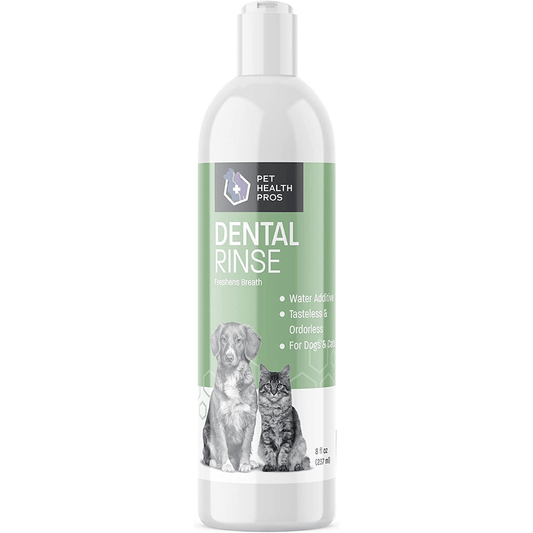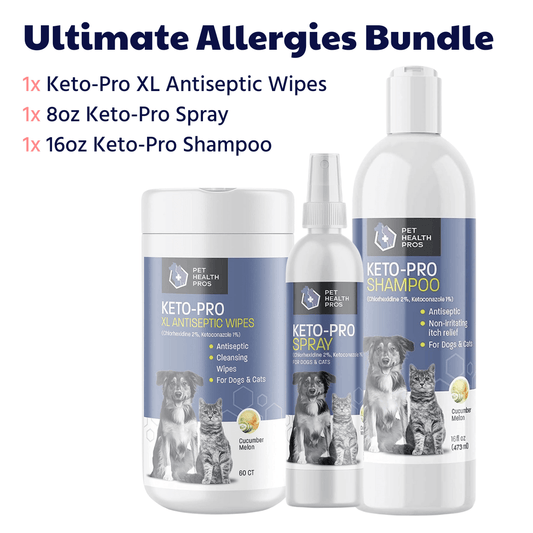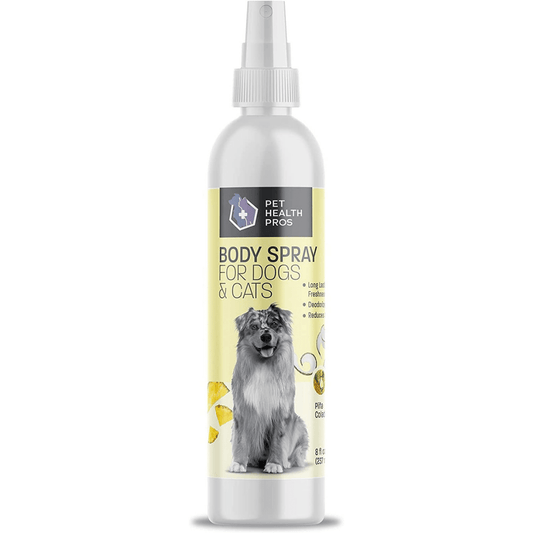Having a bright coat is not only aesthetically pleasing, but it is also a reflection of your dog's overall health. A shiny and lustrous coat indicates that your dog is well-nourished and properly cared for. In this article, we will explore the importance of a bright coat, the factors that can affect coat brightness, and how to achieve a brighter coat using dog shampoo for whitening.
Key Takeaways
- A bright coat is a sign of a healthy and well-nourished dog.
- Genetics play a role in determining coat color and brightness.
- Factors such as diet, grooming, and sun exposure can affect coat brightness.
- When choosing a dog shampoo for whitening, consider your dog's coat type and look for ingredients that promote whitening.
- Avoid shampoos with harmful ingredients and ensure the pH balance is suitable for your dog's coat health.
Understanding the Importance of a Bright Coat
Why a Bright Coat Matters
A bright coat is not just about aesthetics. It can also be an indicator of your dog's overall health and well-being. A dull or discolored coat may suggest underlying health issues that need to be addressed. Additionally, a bright coat can make your dog stand out and appear more attractive. It can also boost your dog's confidence and make them feel good about themselves.
The Role of Genetics in Coat Color
The color of a dog's coat is determined by genetics. Different genes control the production of pigments that give the coat its color. For example, the gene responsible for producing eumelanin determines whether a dog will have a black or brown coat. Another gene, called the dilution gene, can lighten the coat color by reducing the amount of pigment produced. These genetic factors play a significant role in determining the coat color of a dog.
It's important to note that coat color genetics can be complex, with multiple genes interacting to produce different variations. For instance, in some breeds, certain genes can cause the coat to have patches of different colors or patterns. Understanding the genetics behind coat color can help breeders predict and selectively breed for specific coat colors.
While genetics play a crucial role, it's also essential to consider other factors that can affect coat brightness, such as grooming practices, diet, and overall health. By understanding the role of genetics and implementing proper care, dog owners can help maintain a bright and healthy coat for their furry companions.
Factors That Can Affect Coat Brightness
There are several factors that can affect the brightness of your dog's coat. One important factor is nutrition. A balanced diet that includes essential nutrients like omega-3 fatty acids, vitamins, and minerals can contribute to a healthier and brighter coat. Another factor to consider is environmental exposure. Excessive sun exposure, harsh weather conditions, and pollutants can dull the coat and cause discoloration. Additionally, grooming practices play a role in coat brightness. Regular brushing helps distribute natural oils and removes dead hair, promoting a shinier coat. Finally, underlying health issues can also impact coat brightness. Skin conditions, allergies, and hormonal imbalances can affect the quality and color of the coat.
Choosing the Right Dog Shampoo for Whitening
Identifying Your Dog's Coat Type
Identifying your dog's coat type is an important step in choosing the right dog shampoo for whitening. Different coat types require different grooming techniques and products. Here are some common coat types and their characteristics:
-
Smooth Coat: This type of coat is short and sleek, with no undercoat. It is easy to maintain and often found in breeds like Dalmatians and Boxers.
-
Double Coat: This type of coat has a dense, insulating undercoat and a longer, protective topcoat. Breeds like German Shepherds and Huskies have double coats.
-
Wire Coat: This type of coat is rough and wiry, with a dense undercoat. It requires regular hand-stripping or professional grooming to maintain its texture.
-
Curly Coat: This type of coat is curly or wavy, with a dense, soft texture. Breeds like Poodles and Bichon Frises have curly coats.
-
Long Coat: This type of coat is long and flowing, often requiring regular brushing and grooming. Breeds like Afghan Hounds and Shih Tzus have long coats.
Ingredients to Look for in Whitening Shampoos
When choosing a dog shampoo for whitening, it's important to look for specific ingredients that can help brighten your dog's coat. One important ingredient to look for is optical brighteners, which are substances that absorb ultraviolet light and emit blue light, making the coat appear brighter. Another key ingredient is chamomile extract, which has natural brightening properties and can help enhance the color of your dog's coat. Additionally, vitamin E is beneficial for coat health and can help maintain a bright and shiny appearance. It's also worth considering shampoos that contain oatmeal, as it can soothe the skin and reduce any irritation or inflammation that may be affecting the coat's brightness.
Avoiding Harmful Ingredients
When choosing a dog shampoo for whitening, it is important to avoid harmful ingredients that can potentially damage your dog's coat or skin. Sulfates and parabens are two common ingredients found in many shampoos that should be avoided. Sulfates can strip the natural oils from your dog's coat, leaving it dry and prone to breakage. Parabens, on the other hand, have been linked to skin irritation and allergic reactions in some dogs.
To ensure the safety and effectiveness of the shampoo, look for products that are phthalate-free and hypoallergenic. Phthalates are chemicals often used as fragrance enhancers, but they can be harmful to both dogs and humans. Hypoallergenic shampoos are formulated to minimize the risk of allergic reactions, making them a safer choice for dogs with sensitive skin.
It is also important to read the ingredient list carefully and avoid shampoos that contain artificial colors and fragrances. These additives can cause skin irritation and may not provide any additional benefits for your dog's coat.
Considering pH Balance for Coat Health
The pH balance of a dog's skin plays a crucial role in maintaining a healthy and bright coat. pH balance refers to the level of acidity or alkalinity of the skin. Dogs have a slightly acidic pH, typically ranging from 6 to 7.5. Maintaining the proper pH balance is important because it helps to keep the skin's natural protective barrier intact. This barrier helps to prevent moisture loss, protect against harmful bacteria, and maintain overall skin health. When the pH balance is disrupted, it can lead to various skin issues, including dryness, itchiness, and dull coat.
Proper Bathing Techniques for a Brighter Coat
Prepping Your Dog for Bath Time
Before giving your dog a bath, it's important to properly prepare them to ensure a successful bathing experience. Here are some steps to follow:
-
Brush your dog's coat thoroughly to remove any tangles or mats. This will make it easier to clean their fur and prevent any discomfort during the bath.
-
Place a non-slip mat or towel in the bathtub or sink to provide your dog with stability and prevent them from slipping.
-
Gather all the necessary bathing supplies, including dog shampoo, towels, and a brush. Having everything within reach will make the process more efficient.
-
Trim your dog's nails before the bath to prevent any scratching or injuries while they are in the water.
-
If your dog is anxious or nervous about baths, consider using a calming spray or playing soothing music to help them relax.
Remember, a calm and prepared dog will make bath time more enjoyable for both of you!
Using the Right Water Temperature
The water temperature you use when bathing your dog can have an impact on the brightness of their coat. Warm water is generally recommended as it helps to open up the hair follicles and allows the shampoo to penetrate more effectively. However, it's important to avoid using water that is too hot as it can be uncomfortable for your dog and may cause skin irritation. On the other hand, using water that is too cold may not effectively remove dirt and debris from your dog's coat. It's best to aim for a comfortable warm temperature that is not too hot or too cold.
Applying the Shampoo Correctly
Proper application of the whitening shampoo is crucial for achieving the desired results. Start by wetting your dog's coat thoroughly with warm water. This helps to open up the hair follicles and allows the shampoo to penetrate deeply. Apply the whitening shampoo as a rich lather, making sure to cover all areas of your dog's coat. Let the shampoo stand for 3-5 minutes to allow the active ingredients to work their magic. Finally, rinse your dog's coat thoroughly with warm water to remove all traces of the shampoo.
Rinsing and Drying Techniques
After applying the shampoo and thoroughly massaging it into your dog's coat, it's time to rinse off the product. Use lukewarm water to ensure a comfortable temperature for your dog. Gently massage your dog's coat while rinsing to remove all traces of shampoo.
Once the shampoo is completely rinsed out, it's important to dry your dog properly. Use a clean towel to gently pat your dog's coat, removing excess water. Avoid vigorously rubbing the coat, as this can cause tangles and damage the hair.
If you have a long-haired dog, consider using a blow dryer on a low heat setting to speed up the drying process. Keep the dryer at a safe distance from your dog's skin to prevent overheating. Remember to continuously move the dryer to avoid concentrating heat in one area.
Remember, proper rinsing and drying techniques are essential for maintaining a bright and healthy coat for your dog.
Maintaining a Bright Coat Between Baths
Regular Brushing and Grooming
Regular brushing and grooming are essential for maintaining a bright and healthy coat for your dog. Brushing helps prevent tangles and matting, reducing shedding and hair accumulation in your home. It also stimulates the production of natural oils, which helps keep the coat moisturized and shiny. Additionally, brushing allows you to check for any skin issues or abnormalities, such as fleas or ticks. By establishing a regular brushing routine, you can keep your dog's coat in optimal condition and promote overall skin health.
Diet and Nutrition for Coat Health
Proper nutrition plays a crucial role in maintaining a healthy coat for your dog. Dietary deficiencies can result in a dull and lackluster coat, while a balanced and nutrient-rich diet can promote a shiny and vibrant coat. Here are some key factors to consider when it comes to diet and nutrition for coat health:
- Protein: Protein is essential for healthy hair growth and coat maintenance. Ensure that your dog's diet includes high-quality sources of protein such as lean meats, fish, and eggs.
- Omega-3 Fatty Acids: Omega-3 fatty acids, found in fish oil and flaxseed, are beneficial for coat health. They help reduce inflammation and promote a soft and shiny coat.
- Vitamins and Minerals: Adequate intake of vitamins and minerals, such as vitamin E, biotin, and zinc, is important for maintaining a healthy coat. These nutrients support hair follicle health and contribute to coat strength and shine.
In addition to providing a balanced diet, it's important to ensure that your dog has access to clean and fresh water at all times. Hydration is essential for overall coat health and can help prevent dryness and brittleness.
Tip: Consult with your veterinarian to determine the specific dietary needs of your dog based on their breed, age, and any underlying health conditions.
Protecting Your Dog's Coat from Sun Damage
While spending time outdoors with your dog is important for their overall well-being, it's essential to take precautions to protect their coat from sun damage. Sun exposure can lead to fading, dryness, and brittleness of the coat, making it lose its natural shine and luster. Here are some tips to help protect your dog's coat from the harmful effects of the sun:
- Limit sun exposure: Avoid prolonged periods of direct sunlight, especially during the peak hours of the day when the sun's rays are the strongest.
- Provide shade: Make sure your dog has access to shaded areas, such as trees or umbrellas, where they can seek refuge from the sun.
- Use sunscreen: Apply a pet-safe sunscreen to areas of your dog's coat that are prone to sunburn, such as the nose, ears, and belly.
- Consider sun-protective clothing: For dogs with thin hair coats or patchy areas of hair loss, sun-protective clothing can provide an extra layer of protection against harmful UV rays.
Remember, prevention is key when it comes to protecting your dog's coat from sun damage. By following these tips, you can help maintain a bright and healthy coat for your furry friend.
Addressing Skin Issues Promptly
Properly addressing skin issues in your dog is crucial for maintaining a bright coat. Skin conditions can affect the overall health and appearance of your dog's coat. Here are some common dog skin conditions to look out for:
- Allergies
- Dandruff
- Yeast infections
- Ringworm
- Shedding and hair loss
- Mange/Demodex
If you notice any signs or symptoms of these conditions, it's important to consult with your veterinarian for proper diagnosis and treatment. Prompt attention to skin issues can help prevent further damage to your dog's coat and overall well-being.
Conclusion
In conclusion, using a dog shampoo specifically formulated for whitening can help achieve a brighter coat for your furry friend. By selecting a shampoo that contains natural ingredients and is free from harsh chemicals, you can ensure that your dog's coat remains healthy and vibrant. Regular bathing with a whitening shampoo, combined with proper grooming and a balanced diet, can make a noticeable difference in the appearance of your dog's coat. Remember to consult with your veterinarian before introducing any new products into your dog's grooming routine. With the right care and attention, your dog can have a beautiful, bright coat that will make them the envy of the neighborhood.
Frequently Asked Questions
How often should I bathe my dog to maintain a bright coat?
The frequency of bathing your dog depends on their breed and activity level. Generally, bathing every 4-6 weeks is sufficient to maintain a bright coat.
Can I use human shampoo on my dog for whitening?
No, it is not recommended to use human shampoo on dogs. Human shampoos have different pH levels and ingredients that can be harmful to dogs' skin and coat. It is best to use a dog shampoo specifically formulated for whitening.
Are there any specific ingredients I should look for in whitening shampoos?
Yes, look for whitening shampoos that contain ingredients like optical brighteners, chamomile extract, and aloe vera. These ingredients can help enhance the brightness of your dog's coat.
How long should I leave the whitening shampoo on my dog's coat?
Follow the instructions provided on the shampoo bottle. Generally, you should leave the shampoo on for a few minutes to allow it to work its magic. Avoid leaving it on for too long as it may irritate your dog's skin.
Can I use a whitening shampoo on my dog with sensitive skin?
If your dog has sensitive skin, it is important to choose a whitening shampoo that is specifically formulated for sensitive skin. These shampoos are usually gentle and free from harsh ingredients that can cause irritation.
Is it necessary to use a conditioner after using a whitening shampoo?
Using a conditioner after shampooing can help keep your dog's coat soft and manageable. Look for conditioners that are specifically designed for dogs and follow the instructions for application.









